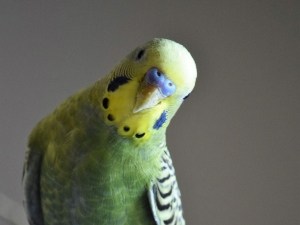
If something about your bird has changed, and you’re an attentive budgie owner, then you’ll likely quickly spot the change and worry about what is going on with your bird.
This article is a look into why your budgie’s beak is dry
Table of Contents
Why is my budgie’s beak dry?
Changes can appear anywhere on your bird’s body, this includes on your bird’s feathers, body, wings, face, and on your bird’s beak, some changes are not dangerous for the bird but some changes are.
Here is why your bird has a dry beak:
Beak molting:
Birds not only molt their feathers off, but the top layer of their beak will also molt off. The beaks of birds are made up of a variety of different parts including blood vessels, a bony part, tissue, and keratin.
The keratin is what your see as the bird’s beak, it is the top layer. This keratin is the same keratin that makes up our nails, hair and some portions of our skin and just like our hair and nails it is always growing.
In the wild, birds usually rub their beaks against surfaces to keep the beak from overgrowing, this also removes the old keratin from the bird’s beak and allows the new keratin to come to the surface.
If your budgie does not have anything to rub its beak on then the beak will become dry and even flake as the old keratin falls off of the birds beak,
What to do:
You may want to give your bird a variety of toys, foods, and chewable items to help maintain its beak.
Items like natural wood perches, cuttlebones, foods like almonds, and fresh branches will be great for the bird to chew on.
Diet issues:
Diet plays a big role in the health of your bird, its beak included, and a diet that is lacking may be the reason why your bird’s beak is flaking
If your bird’s beak is dry to the point where it’s dry and flakey then the bird’s diet may be deficient in the amino acid methionine
What to do:
Get this nutrient into your bird’s body by serving your bird foods that are high in methionine, foods such as meats, brazil nuts, sesame seeds, and fish.
This will be a lengthy process to remedy so don’t be too quick to look for a change, but if this is indeed the issue then the beak will eventually go back to normal after the diet change.
Scaly face mites:
If your bird’s beak looks so dry that it looks as though it is flaking off pieces of dried beak then the bird may have scaley face mites.
The full name for these mites is Knemicodoptes and they will burrow into your bird’s body from a variety of different locations, the beak included.
All this burrowing can cause the beak to not only become dry but can cause thick crusts to develop on the beak and then fall off.
Other signs of a mite infestation on your bird include skin irritation, messy feathers, excessive preening, and thick crusts growing on the bird’s legs, cere, and eye.
What to do:
Taking your bird to the vet is recommended over giving your bird anti-mite medications without the advice of a vet.
These medications can harm your bird’s fragile respiratory system and if given for no reason then you’d simply be harming your bird.
If you enjoyed this article then you may also be interested in other bird related articles. Here are some articles that you may be interested in: Budgie Cere Hypertrophy, Budgie Cere Overgrowth, How To Tell If Birds Are Bonded To Each Other, How To Know If A Parrot Is Angry, Why Are My Bird’s Feathers Turning Grey?, Cockatiel Growth On Side Of Beak, Black Feather Fungus, Black Spots On Cockatiel Feathers, Conure Feathers Turning Black

